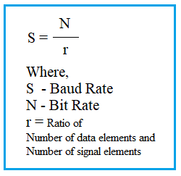Bipolar Line Coding: Advantages and Disadvantages
Advertisement
This page explores the benefits and drawbacks of Bipolar Line Coding.
Introduction:
Line coding is the process of converting digital data into digital signals, transforming a sequence of bits into a digital signal suitable for transmission over a channel. Line coding enhances bandwidth and power efficiency in digital communication systems. Furthermore, it aids in synchronization at the receiver by eliminating long strings of ones and zeros. Various line coding techniques exist, including unipolar, polar, bipolar, multilevel (2B1Q, 8B6T, 4D-PAM5), and multitransitional (MLT-3) methods.
What is Bipolar Line Coding?
This encoding technique employs three voltage levels to represent binary data: positive, negative, and zero (or DC) level. This signal is also known as a duo-binary or bipolar signal. Three main types of bipolar coding are used for data communication: AMI, B8ZS, and HDB3.
In the AMI (Alternate Mark Inversion) form of Bipolar encoding, a binary zero (‘0’) is represented by 0 voltage, whereas a binary one (‘1’) is represented by alternating positive and negative voltages, as illustrated below.
Bipolar coding uses different types of pulses and can be categorized as NRZ (Non-Return to Zero) or RZ (Return to Zero).
The following parameters of Bipolar coding (‘AMI’) are used for comparison with other line codes:
- Transmission of DC component: No
- Signaling Rate: 1/Tb
- Noise Immunity: High
- Synchronizing capability: Very Good
- Bandwidth required: 1/2Tb
- Crosstalk: Low
Bipolar NRZ

As depicted above, Bipolar NRZ coding uses zero voltage to represent a binary zero, and +ve and -ve pulses to represent alternating binary ones during the entire bit period (‘Tb’). Therefore, the pulse duration and symbol bit duration are equal in NRZ type.
Example of Bipolar NRZ coding:
- Input: Binary data
[1 0 1 0 0 1 1 1 0] - Output:
[+ve pulse, DC voltage, -ve pulse, DC, DC, +ve pulse, -ve pulse, +ve pulse, DC]
Bipolar RZ

As shown, Bipolar RZ coding also uses DC to map a binary zero, and +ve or -ve pulses with a transition to DC at the center of the bit period to map a binary one. Consequently, the pulse duration is half of the symbol bit duration in RZ type.
Example of Bipolar coding (RZ):
- Input: Binary data
[1 0 1 0 0 1 1 1 0], Bit period = Tb - Output:
[+ve pulse (for Tb/2 duration) DC (over Tb/2), DC voltage (Tb), -ve pulse (Tb/2), DC(Tb/2), DC(Tb), DC(Tb), +ve pulse (Tb/2) DC (Tb/2), -ve pulse (Tb/2), DC (Tb/2), +ve pulse (Tb/2), DC (Tb/2), DC (Tb) ]
Advantages of Bipolar Line Coding
Following are the benefits or advantages of Bipolar Line Coding :
- It is a very simple line coding technique to implement.
- Low frequency components are not present in the bipolar encoded signal.
- It occupies lower bandwidth than unipolar and polar NRZ types.
- Signal droop issue is not observed in bipolar signal and hence it is suitable for transmission over AC coupled lines.
- Single error detection is possible using bipolar coding technique.
Disadvantages of Bipolar Line Coding
Following are the drawbacks or disadvantages of Bipolar Line Coding:
- No clock signal is present for use.
- Long strings of binary data with continuous 1’s and 0’s cause loss of synchronization.
Advertisement
 RF
RF







